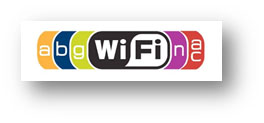A New look of Virtual Desktop Service for Students
?
The new school year has just commenced and the Computing Services Centre (CSC) would like to take this opportunity to introduce the Virtual Desktop Service (VDS) to new students and provide a brief update on the enhancements made on the VDS during the course of the year.
The CSC had launched the VDS last year to cater for the need of BYOD (Bring Your Own Device) for teaching and learning. Users can connect their personal mobile devices, such as pads, tablets and notebook computers, to the VDS via the campus wireless LAN and enjoy a virtual desktop experience similar to working with PCs in the CSC Teaching Studios.

The VDS provides a convenient way to access the central learning software by breaking the following barriers.
-
Physical location
In the past, students must stay in the CSC Teaching Studios when using central learning applications. If the CSC Teaching Studios are fully booked, students would not be able to access the central learning software at all. With the VDS being extended to all Academic Buildings (AC1, AC2 & AC3) and the CMC Building, students can now access the central learning software anytime anywhere on campus via connecting their personal mobile devices to the campus wireless LAN. The restriction on the physical location no longer exists. - Platforms of your devices
In VDS, all central learning applications run on the virtual desktops hosted on the servers. As such, the VDS is less dependent on the make and performance of the client device and therefore, apart from notebook PCs, it can be run on a variety of mobile devices and operating systems (for example, Mac OS X, iOS and Android) that can connect to the virtual desktops of the VDS via the campus wireless LAN. Thus, the restriction on the OS platform no longer exists. Furthermore, VDS does not require frequent upgrade of mobile hardware for performance, all computing is done by the backend servers.
For more information about the VDS, please refer to the “Frequently Asked Questions for Virtual Desktop Service (VDS)”.
Students can also learn about the development history of VDS by referring to the articles mentioned in the “References” section below.
What’s new in VDS?
Several enhancements have been made on the VDS that are available for students. They are:
- Increased the number of virtual desktop connections to 300
The infrastructure of the VDS has been upgraded and now it is capable of providing 300 virtual desktop concurrent connections for students’ use. - Upgraded to Windows 10
The virtual desktops of the VDS have been upgraded from MS Windows 8.1 to the latest version – Windows 10 Anniversary Update (released on 2 August 2016). Students can now experience the latest version of Windows through VDS. - All virtual desktops are GPU supported
All virtual desktops of the VDS are equipped with Graphics Processing Unit (GPU). Now graphic intensive programs such as Photoshop and AutoCAD can run smoothly on the virtual desktops.
Bring Your Own Device (BYOD) is the trend of studying, students are urged to adopt the VDS in learning to enjoy the most recent IT technology at CityU.
References
- “Bring Your Own Device (BYOD) in Learning: An Update” in Network Computing Issue 83 - March 2015
http://wikisites.cityu.edu.hkhttps://wikisites.cityu.edu.hk/sites/netcomp/articles/Pages/BYODin%20LearningAnUpdate.aspx - “Cater for the Trend of Bring Your Own Device (BYOD) in Teaching” in Network Computing Issue 81 - September 2014
http://wikisites.cityu.edu.hkhttps://wikisites.cityu.edu.hk/sites/netcomp/articles/Pages/CaterfortheTrendofBYODinTeaching.aspx - “Client Virtualization in the CSC Teaching Studios” in Network Computing Issue 79 - March 2014
http://wikisites.cityu.edu.hkhttps://wikisites.cityu.edu.hk/sites/netcomp/articles/Pages/ClientVirtualizationintheCSCTeachingStudios.aspx -
“Moving Forward with Client” in Network Computing Issue 71 - March 2012
http://wikisites.cityu.edu.hkhttps://wikisites.cityu.edu.hk/sites/netcomp/articles/Pages/ClientVirtualization.aspx